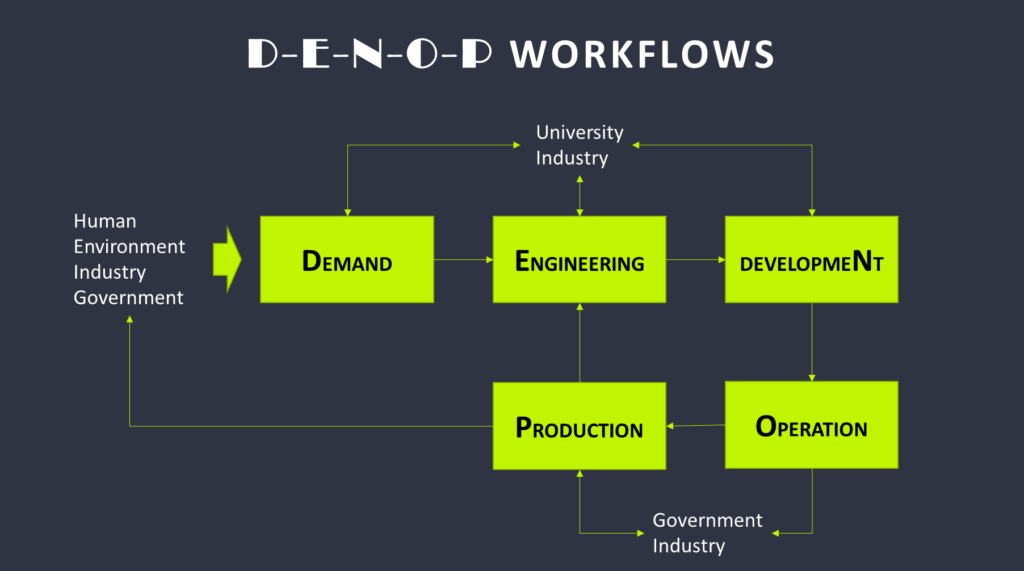At DENOP, our team is dedicated to continuously prototyping and developing innovative digital products. We achieve this by collaborating on cutting-edge technology research and innovation, guided by a structured DENOP workflow. This workflow begins with identifying real-world demands and challenges, followed by initiating targeted research and engineering efforts.
We focus on pushing the boundaries of technology through:
- Demand Analysis – Understanding user and industry needs to shape relevant product concepts.
- Collaborative Research & Engineering – Engaging with experts, institutions, and practitioners to design and develop practical solutions.
- Technology Innovation – Exploring emerging technologies to create impactful solutions tailored for today’s dynamic digital landscape.
- Proof of Concept Development – Testing product viability through isolated, controlled operations that validate key functionalities.
- Production Readiness Planning – Partnering with stakeholders to scale proven concepts into full production, ensuring long-term sustainability and impact.
Through this end-to-end process, DENOP ensures every product we develop is not only technically sound but also grounded in real-world application and value.
DENOP is a structured framework for digital product innovation developed to support vocational school departments in Indonesia, especially within the ecosystem of Diponegoro University (UNDIP).

This framework guides students, educators, researchers, and industry collaborators through a comprehensive product development pipeline, from idea to real-world implementation. It connects human, environmental, industrial, and governmental needs with structured processes of innovation.
The DENOP Workflow
The DENOP framework consists of five interconnected stages:
- Demand
Needs are identified from human challenges, environmental conditions, industrial gaps, and government directives. These demands form the foundation for solution-oriented innovation. - Engineering
Leveraging university knowledge and industrial collaboration, the demand is translated into technical design and research. This stage focuses on feasibility, design, and prototype planning. - developmeNt
Ideas are transformed into tangible digital prototypes. This hands-on development is carried out using agile practices and iterative methods by students and researchers. - Operation (Testing)
Prototypes undergo isolated testing in simulated or controlled environments to validate performance, usability, and scalability. - Production
Validated solutions are prepared for deployment with industry and government partners. This phase ensures readiness for implementation and real-world impact.
Through this end-to-end process, DENOP empowers vocational students and educators to actively participate in the national digital transformation. It provides a practical, research-driven pathway to create meaningful digital products that address real-world needs.
The DENOP framework is not just a methodology, it’s a collaborative innovation ecosystem where universities, industries, and governments converge to nurture future-ready talents and technologies.
